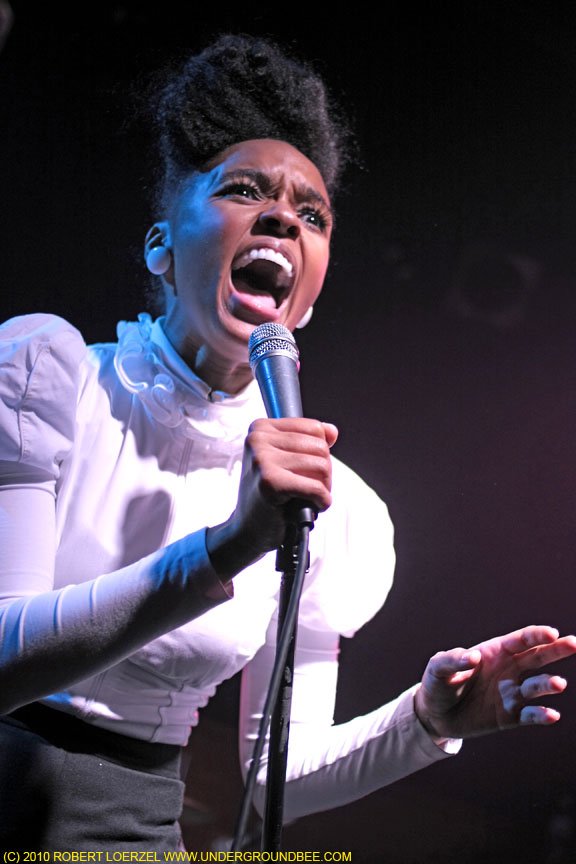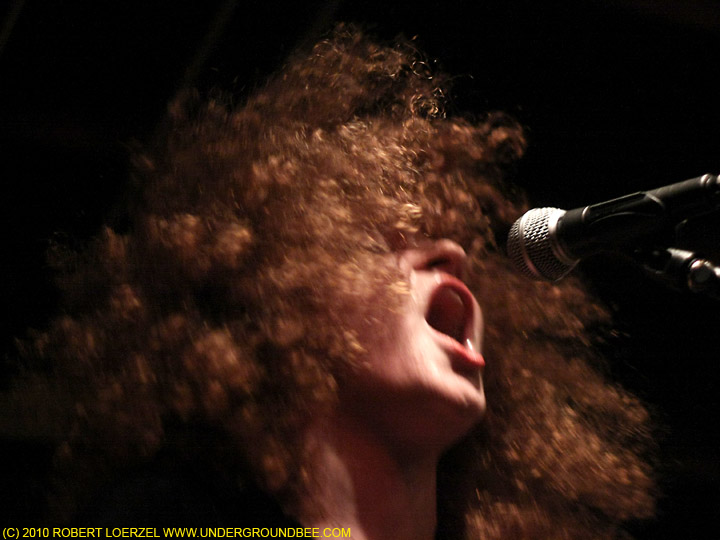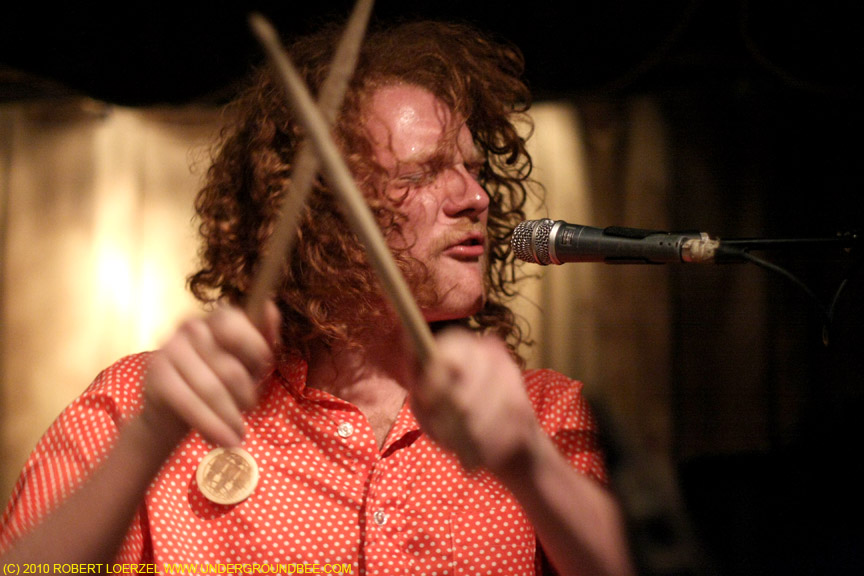
I discovered Seabear a couple of years ago through an almost random search. I’ve liked other musical acts from Iceland, so I searched around online for some new Icelandic bands, hitting upon Seabear. I downloaded Seabear’s first album from emusic and loved the breathy vocals of lead singer Sindri Már Sigfússon and the mellow folk-rock-pop vibe.
Sigfússon also plays under the name Sin Fang Bous, recording a more psychedelic or experimental version of the stuff he does with Seabear, and last year he played a Chicago gig under that name (opening for Múm). But last Friday (April 2) was the first time Seabear had ever played in Chicago, coming at the end of the Icelandic band’s first U.S. tour. I wasn’t sure what to expect for turnout. I wondered how many people have actually heard of Seabear. A fair amount, as it turns out. Schubas was not sold out in advance, but the room was full by the time Seabear took the stage. And the band delivered a strong set.
With seven musicians on stage, Seabear was an authentic band, not just a solo project by Sigfússon (which is apparently how the group started out). Sigfússon’s soft vocals sounded lovely, and the band brought the songs to life with subtle musical touches. When Sigfússon’s bandmates joined in on harmony vocals, the show took on the feeling of friends gathering together to sing favorite songs (much like a Múm gig).
Seabear has a nice new record out called We Built the Fire. www.myspace.com/seabear The band was also featured recently on NPR’s Song of the Day.
 As a bonus, the show started out with a beautiful set of chamber-style folk-pop by Sóley , who is the keyboard player and a backup singer in Seabear. I wish she’d played for more than 20 minutes, but I look forward to hearing more from her in the future. www.myspace.com/ssoolleeyy
As a bonus, the show started out with a beautiful set of chamber-style folk-pop by Sóley , who is the keyboard player and a backup singer in Seabear. I wish she’d played for more than 20 minutes, but I look forward to hearing more from her in the future. www.myspace.com/ssoolleeyy
In between Sóley and Seabear, Chicago artist Via Tania (a.k.a. Tania Bowers + band) played songs from her new album Moon Sweet Moon, with earthy singing and a rootsy, moody brand of folk rock. www.viatania.com
www.myspace.com/viatania







_t607.JPG)